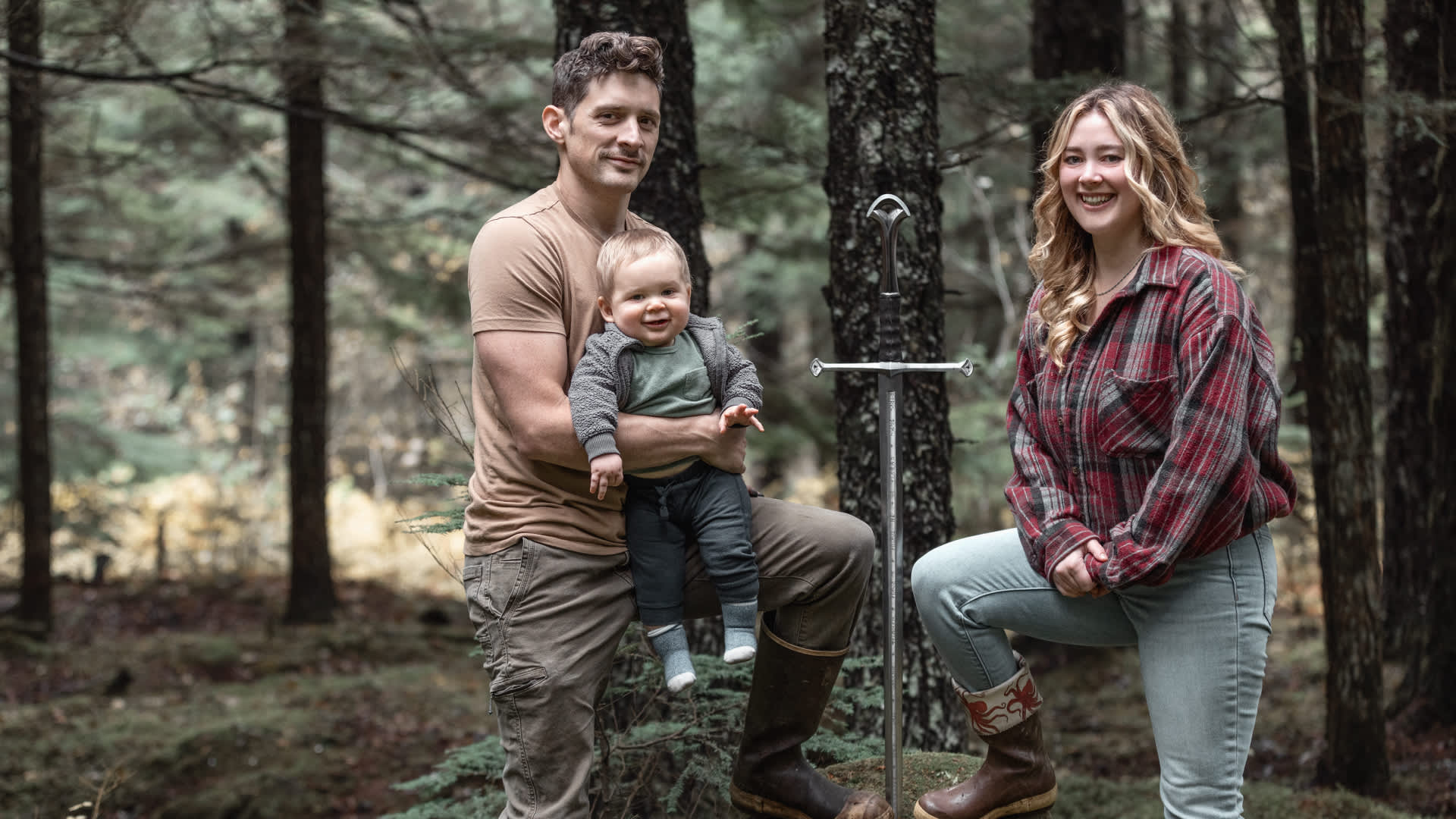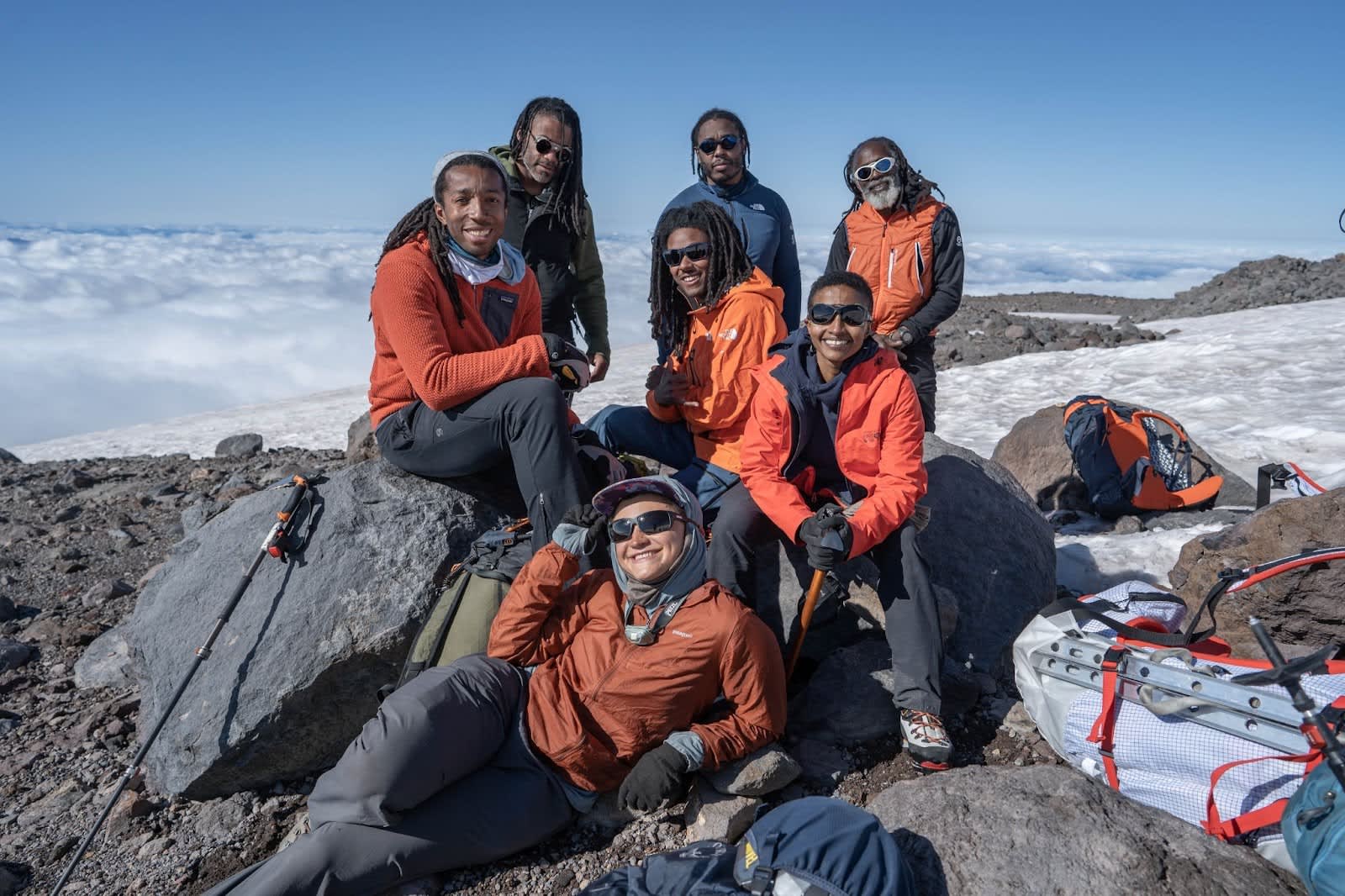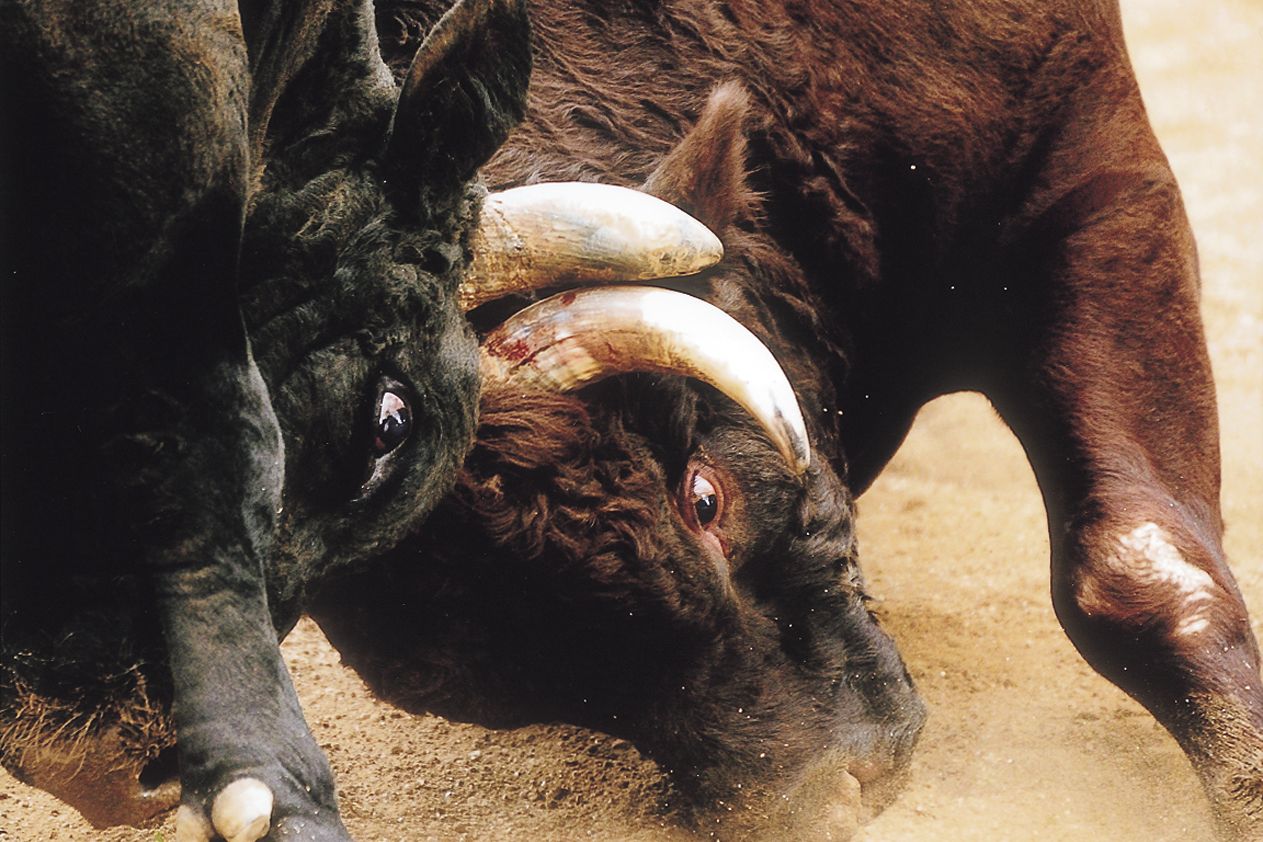$10 gallons of milk and 16-hour drives to the city: What it's like living on $52,000 in rural Alaska
Trevor Barrett grew up in Alaska and started bladesmithing as a hobby eight years ago. He now runs a business making knives and swords that cost up to $12,000.

This story is part of CNBC Make It's Millennial Money series, which details how people around the world earn, spend and save their money.
There are a lot of misconceptions about living in Alaska, and Trevor Barrett has heard them all.
People ask him: Do you live in an igloo? Do you have electricity? What was the first time you saw grass? What's it like to never see the sun? (That one "is a little bit accurate in winter," he says.)
"Most of them are complete misconceptions," Trevor, 35, tells CNBC Make It. "Alaska does have some very strong winters, but it also has very pleasant summers. And it's one of the biggest reasons people fall in love with Alaska."
Trevor is a lifelong Alaskan and lives in Haines, a town of 2,000 people in the southeastern tip of the state bordering British Columbia, and a roughly 16-hour drive to Alaska's biggest city, Anchorage.
Trevor Barrett lives in Haines, Alaska, with his wife, Larissa, and son, Samuel.
Alex Stock for CNBC Make It
Trevor has gotten other people to fall in love with his home state, too. He met his wife, Larissa, while on a work trip in Connecticut, where she's from.
"Then after a while, I broke the news that I was from Alaska and I was probably going to be moving back. And she loved the idea," Trevor says. "We got married and then we moved over and it didn't take long for her to absolutely fall in love with it."
It's the perfect backdrop for their outdoorsy life, their young family and Trevor's growing career as a bladesmith running his own business. Last year, the Barretts lived on $52,000, including Larissa's earnings as a graphic designer for the local newspaper. Here's how they make it work.
Living in Alaska
One of the biggest challenges of living in Alaska is traveling, especially in and out of Haines, which can require a boat or a plane. The cold, dark winters can also be brutal.
But over time, Trevor says, "You learn to appreciate winter even more so. One of the best things about living in Alaska is the quiet life, the privacy and the summers."
One of the best things about living in Alaska is the quiet life, the privacy and the summers.
Trevor is happy to share that love with Larissa; their 10-month-old son, Samuel; and their husky, Nika. The Barretts spend most of their free time outside going to the beach, hiking nearby mountains and canoeing. Trevor is eager to raise his son to love the Alaska lifestyle too.
"I was raised with hunting and fishing and hiking and camping and all the specific and unique Alaska things," he says. "I always had a stick in my hand and mud in my hair as I was playing in the woods as a child."
While Trevor grew up in Kenai (a costal town southwest of Anchorage), he believes "Haines is a really good place to raise children."
How they spend their money
Here's how the Barretts spent their money in July 2023:
Elham Ataeiazar | CNBC Make It
Another big, and expensive, barrier to living in rural Alaska is that most supplies are barged in. In Haines, fresh produce arrives on Tuesdays, "and you've got to act fast if you want to get the freshest stuff," Trevor says. Barges can also be canceled during bad weather, so it's crucial to stock up and be prepared at all times.
Food and fuel prices are also higher than elsewhere in the U.S.: Milk can cost up to $10 a gallon, and gas hovers around $6 a gallon.
Trevor Barrett with his wife, Larissa, and son, Samuel.
Alex Stock for CNBC Make It
It's easy to drive the 7 minutes across town for any basic goods, Trevor says. But for anything else, you have to go far.
"A few times a year, we take either planes or the ferry system down to Juneau, Alaska. Or we'll drive all the way to Anchorage, which is 16 hours," Trevor says. There, the family gets their car maintained and stocks up on supplies you can't get in Haines: clothes, bulk items, business supplies, furniture.
"You start making a list at the beginning of the year of the things that you're running out of," Trevor says.
Turning a hobby into an accidental career
Trevor works as a bladesmith and runs his own business, Barrett Knives. His interest in making blades comes from a self-described nerdy place: "The Lord of the Rings" franchise.
He enjoyed the books as a kid and became obsessed with the movies as a teen. Then, in 2015, Trevor began looking up how to forge blades on YouTube and Google. He gathered some basic materials — an old brake drum, a blow dryer, some pipes and charcoal — and got to work.
Trevor Barrett with a replication of Andúril from J.R.R. Tolkien's "The Lord of the Rings."
Alex Stock for CNBC Make It
"One of my biggest instructors was trial and error. I just made mistake after mistake after mistake, and eventually I was able to learn how to make a semi-functional blade," he says. "As I was teaching myself, I really started to fall in love with it."
Trevor spent every free moment practicing when he wasn't working odd jobs as a first-aid instructor, an auto mechanic or doing construction.
After a while, Trevor started posting his work on Instagram for friends and family. One friend asked how much he was selling his blades for. "That was new to me because I never thought I was going to sell it," Trevor says. He put a number out there: $50. His friend took the offer. "Then it just took off from there."
By early 2020, he to quit his day jobs altogether and went in on Barrett Knives full-time.
A family business
Barrett Knives sells a variety of blades, including hunting blades, kitchen blades, axes and swords. Basic blades, which can take about a day to make, start around $500, while intricate swords that require weeks of work sell for up to $12,000, Trevor says.
Trevor spends about 60 to 70 hours per week on the business between production and social media. Working for himself means he can be flexible with his hours and spend more time with Larissa, Samuel and Nika.
Basic blades start at around $500, while intricate swords that require weeks of work sell for up to $12,000, Trevor says.
Alex Stock for CNBC Make It
It was daunting to completely "abandon a regular paycheck," Trevor says. "But it really did seem like the right thing to do for our family."
"I was able to pursue something that I really was passionate about," he adds. "Despite all of the stress and the financial hardship that could potentially come from leaping into a non-essential business like Barrett Knives, it turned out to be quite the blessing. I don't think I would ever go back or change anything, even though it took a lot of legwork in order to make it happen."
Between August 2022 and July 2023, Barrett Knives netted roughly $37,000 in income.
Larissa continued to work for the local newspaper for a while, and earlier this year left that job following the birth of Samuel. She now handles tasks like managing Barrett Knives' finances and marketing.
Trevor says working alongside Larissa is "one of the best things that I've ever experienced. We work very well as a team and it makes it super easy. If anything, being able to work together like that just builds our relationship even more."
Leaving a legacy
Trevor admits he's not the best with money, but he learns from Larissa and the needs of their growing family.
"Making about $52,000 a year, it is possible to live [in Haines] comfortably, but you need to make sure that you live simply and you're smart with your money," he says.
The family has just under $21,000 in debt across two credit cards and a personal loan. Paying off debt and saving have been more difficult since launching the business, Larissa says.
The Barretts save when they can for small trips in the winter and summer, and they hope to buy a home one day where they can keep their work site nearby.
Trevor Barrett and his family live in Haines, Alaska.
Alex Stock for CNBC Make It
Moving to a larger work shed in the last year means Barrett Knives could produce more blades at a higher quality. Trevor predicts "the business will continue to grow into next year, and that we'll actually be able to make even more than we've ever been able to before."
Barrett Knives isn't just a business for Trevor; it's part of a legacy thousands of years in the making.
"The favorite thing about my work is being able to work with my hands and be creative every single day," Trevor says. He even gets to be a part of other families' histories when he creates heirloom blades meant to be passed down to the next generation, or to serve as a wedding centerpiece and representation of a couple's marriage.
"It's an honor because I'm able to have a small part in some of the most significant parts of different people's lives," Trevor says.
He hopes to introduce Samuel to bladesmithing, too: "One of the big goals for me, if it ever works out, is to continue Barrett Knives not just with me, but with my son and maybe even his son, because then it becomes a legacy. Then it's just celebrating not only the craft of bladesmithing, but it's also kind of my own heirloom in the craft."
What's your budget breakdown? Share your story with us for a chance to be featured in a future installment.
Want to be smarter and more successful with your money, work & life? Sign up for our new newsletter!


 MikeTyes
MikeTyes 






























